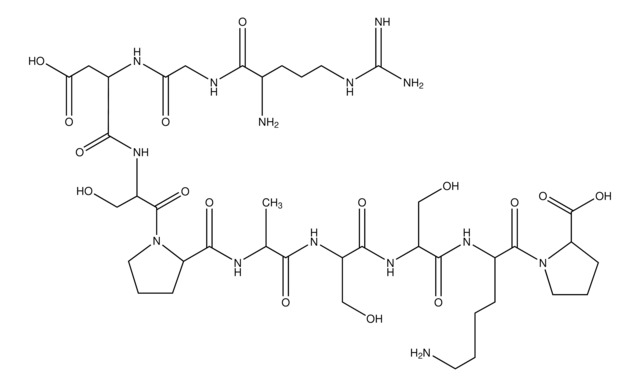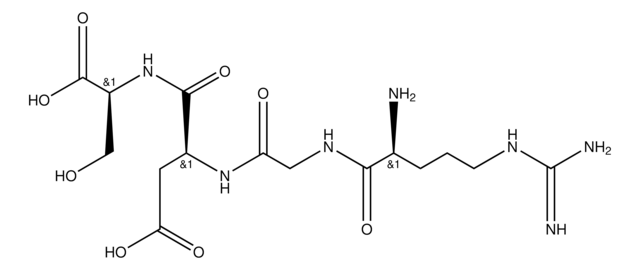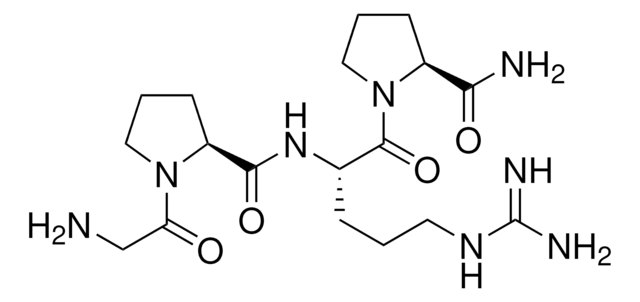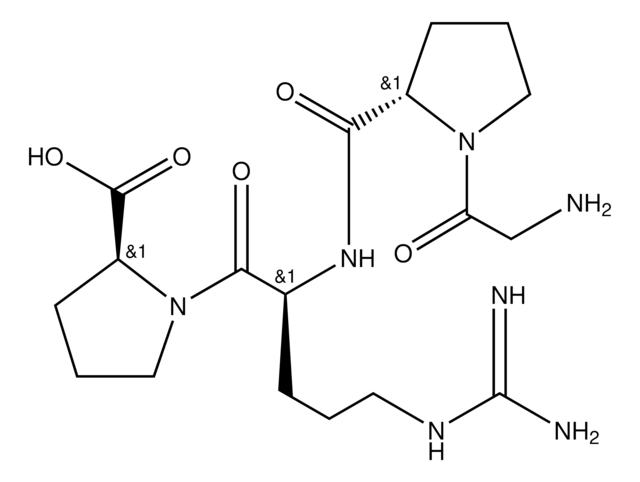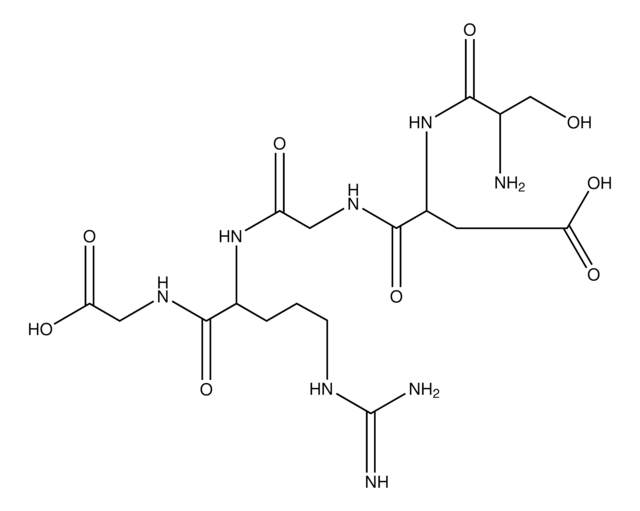Kluczowe dokumenty
G1269
Gly-Arg-Gly-Asp-Ser-Pro-Lys
≥97% (HPLC)
Synonim(y):
GRGDSPK
About This Item
Polecane produkty
pochodzenie biologiczne
human
Poziom jakości
Próba
≥97% (HPLC)
Formularz
powder
metody
blocking: suitable
ligand binding assay: suitable
temp. przechowywania
−20°C
ciąg SMILES
NCCCC[C@H](NC(=O)[C@@H]1CCCN1C(=O)[C@H](CO)NC(=O)[C@H](CC(O)=O)NC(=O)CNC(=O)[C@H](CCCNC(N)=N)NC(=O)CN)C(O)=O
InChI
1S/C28H49N11O11/c29-8-2-1-5-16(27(49)50)37-25(47)19-7-4-10-39(19)26(48)18(14-40)38-24(46)17(11-22(43)44)36-21(42)13-34-23(45)15(35-20(41)12-30)6-3-9-33-28(31)32/h15-19,40H,1-14,29-30H2,(H,34,45)(H,35,41)(H,36,42)(H,37,47)(H,38,46)(H,43,44)(H,49,50)(H4,31,32,33)/t15-,16-,17-,18-,19-/m0/s1
Klucz InChI
ZRVZOBGMZWVJOS-VMXHOPILSA-N
informacje o genach
human ... ITGA2B(3674) , ITGAV(3685)
Szukasz podobnych produktów? Odwiedź Przewodnik dotyczący porównywania produktów
Amino Acid Sequence
Opis ogólny
Zastosowanie
- as a blocking peptide to inhibit integrin-fibronectin binding
- in adhesion assay performed on porcine trophectoderm to study the influence of TGFβ (transforming growth factor) on cell adhesion
- for incubation of MC3T3-E1 osteoblast cells to determine its effect on cell adhesion measured by AFM (atomic force microscopy)
- for the preparation of RGD.Flt23k.NR nanoparticles
- to determine the involvement of RGD-integrin bonding in cell adhesion process
Działania biochem./fizjol.
Kod klasy składowania
11 - Combustible Solids
Klasa zagrożenia wodnego (WGK)
WGK 3
Temperatura zapłonu (°F)
Not applicable
Temperatura zapłonu (°C)
Not applicable
Środki ochrony indywidualnej
Eyeshields, Gloves, type N95 (US)
Wybierz jedną z najnowszych wersji:
Masz już ten produkt?
Dokumenty związane z niedawno zakupionymi produktami zostały zamieszczone w Bibliotece dokumentów.
Klienci oglądali również te produkty
Nasz zespół naukowców ma doświadczenie we wszystkich obszarach badań, w tym w naukach przyrodniczych, materiałoznawstwie, syntezie chemicznej, chromatografii, analityce i wielu innych dziedzinach.
Skontaktuj się z zespołem ds. pomocy technicznej


